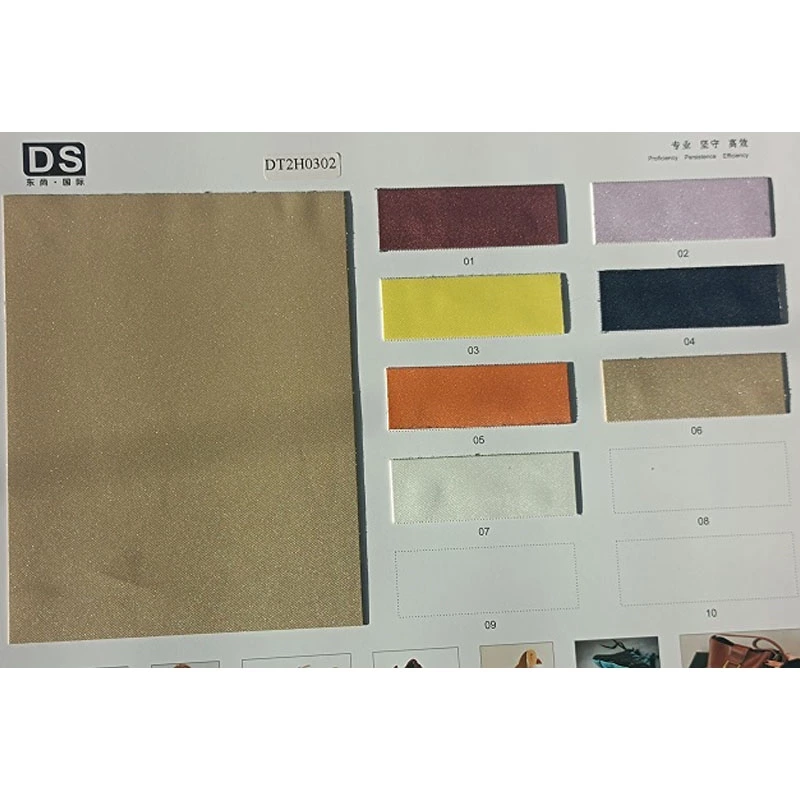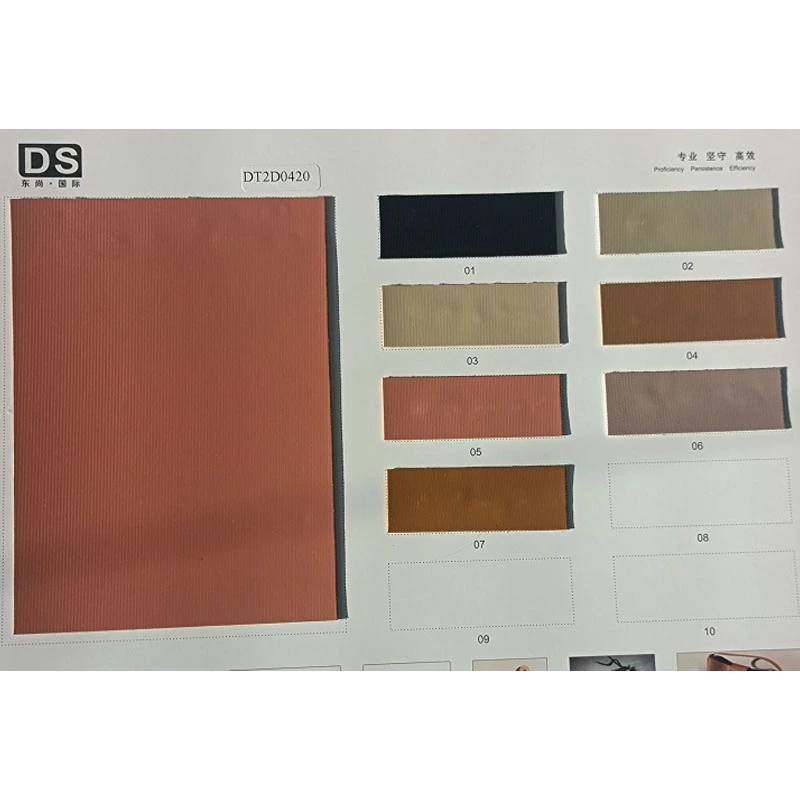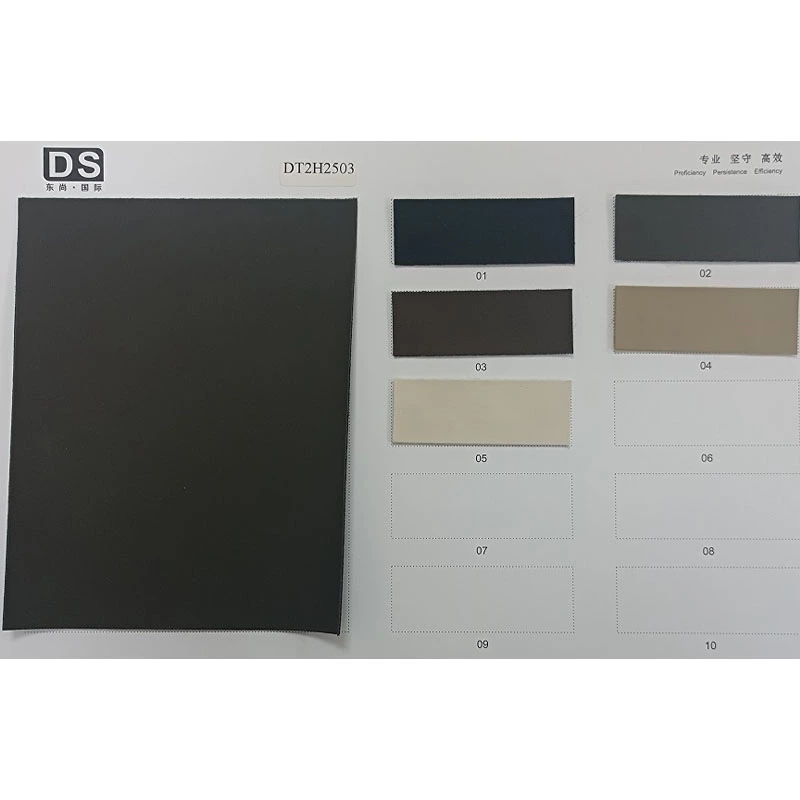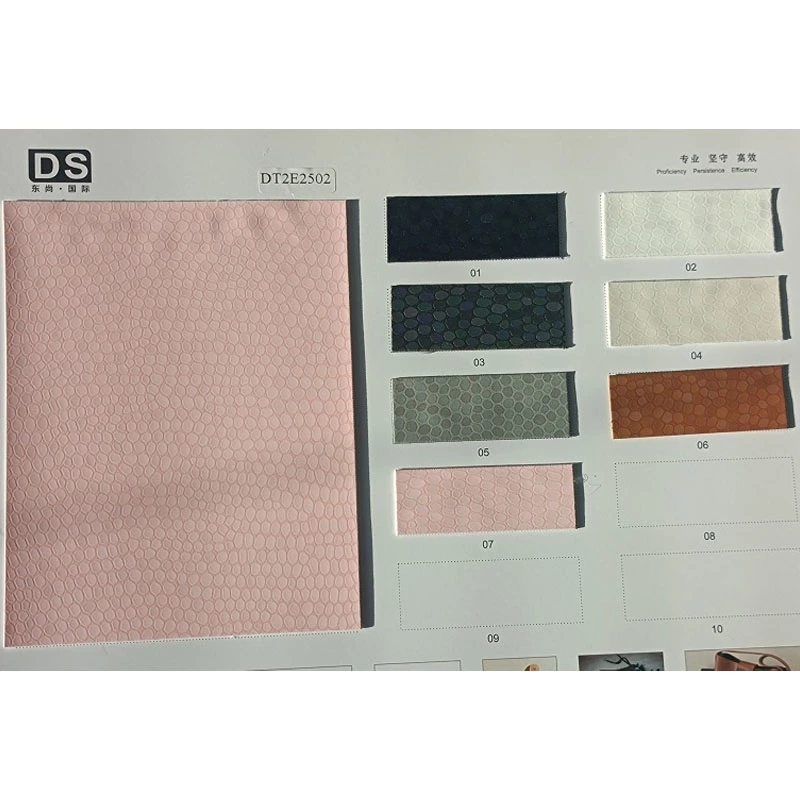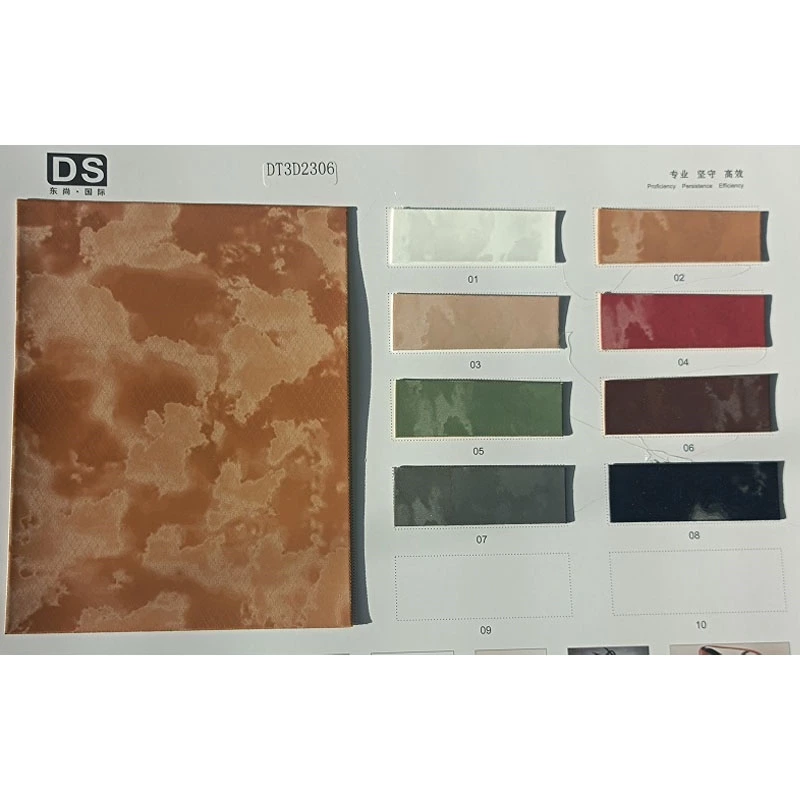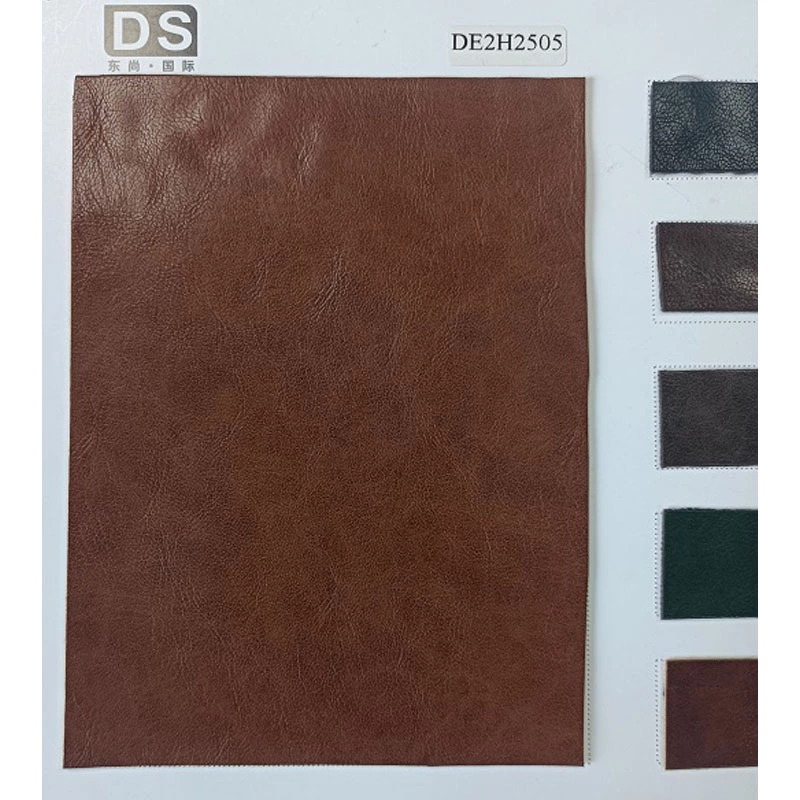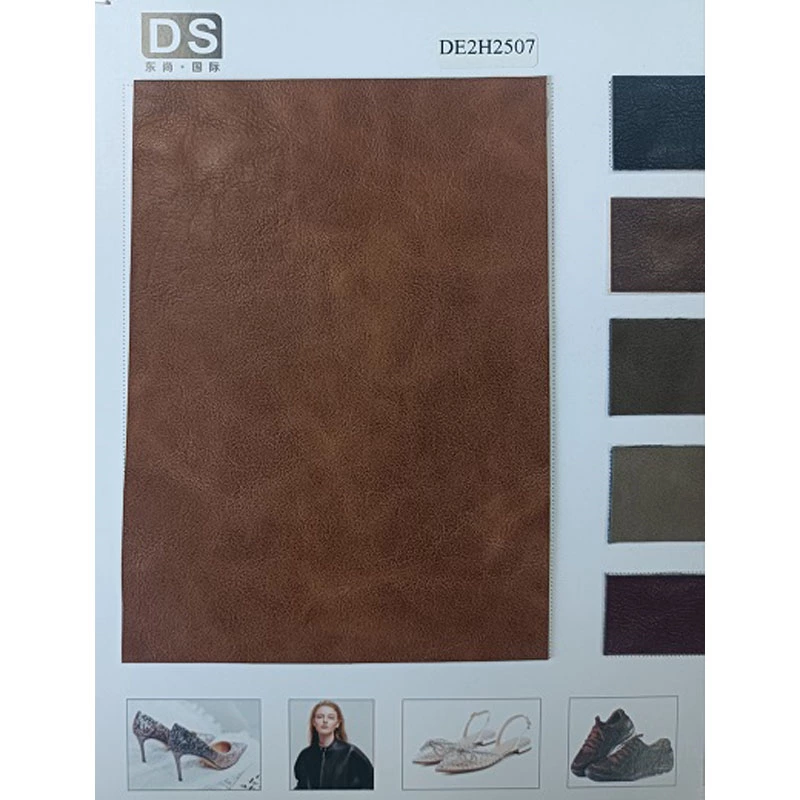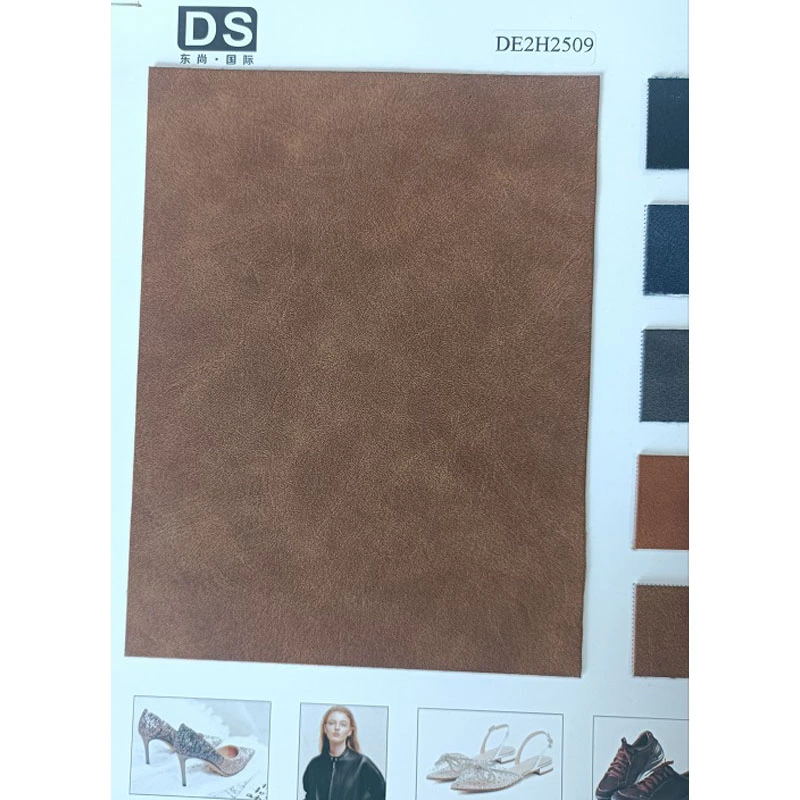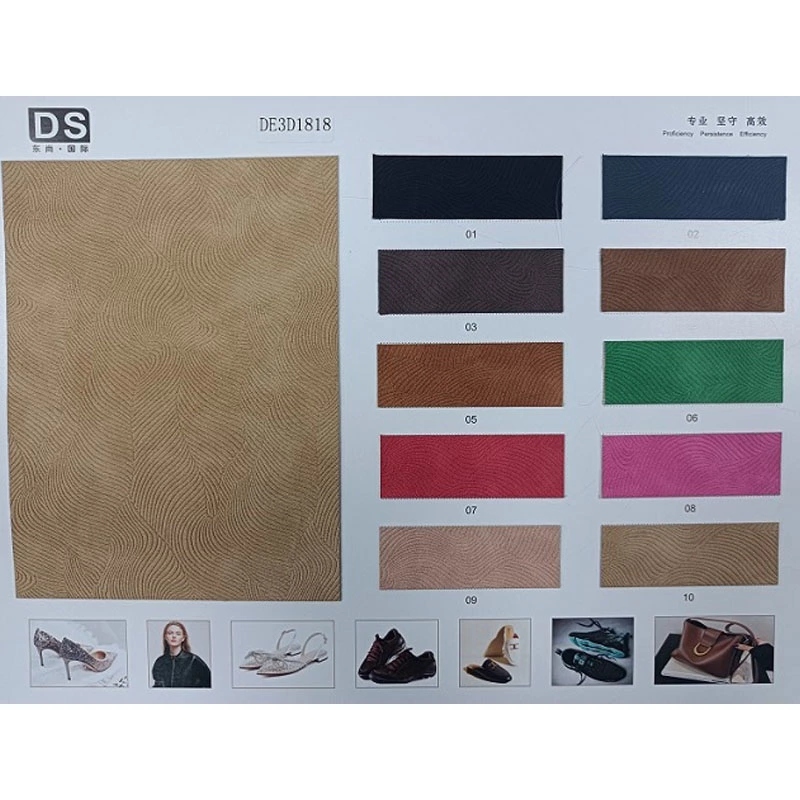The Latest Introduction To Three Types Of Artificial Leather Fabrics
Artificial leather has always been a favorite in the design world. Products with leather usually enter the market with high-end and luxury labels, and are also loved by people who pursue quality.
What is artificial leather made of?
Natural leather has the following characteristics: dense and porous, moisture absorption and perspiration, good toughness, wear resistance and cold resistance, wear resistance and durability, easy to clean, and looks very high-end. There are also many disadvantages, such as its poor physical properties, uneven thickness, non-alkali resistance, and expensive price, limited resources, low utilization rate, and environmentally unfriendly production process. The process will contain harmful substances such as chromium and formaldehyde.
However, with the deteriorating living environment, humans continue to occupy the living space of animals. Based on the scarcity of natural resources and the need for animal protection, it is inevitable to use synthetic materials to replace natural leather to imitate the color, material texture, and surface texture of leather.
The global market is actively developing environmentally friendly simulated leather, and its application areas are mainly in footwear, furniture, sofas and bags, vehicle and ship interiors, clothing fabrics, handbags, craft decorative fabrics, and military supplies. The materials used in the market for making imitation leather are mainly composed of two parts.
The lower part of the picture is the base fabric used for leather, which is generally made of woven, knitted, braided, non-woven fabrics and other materials;
The upper part is the surface layer, which is mainly coated with PVC or PU resin or other materials on the base fabric to form an imitation leather surface.
Let's take a look at the types of imitation leather on the market.
01. Microfiber leather
Microfiber leather must first achieve ultrafine fibers (skeleton materials) with similar structure and performance to the bundled collagen fibers in natural leather; secondly, it must adopt a non-woven fabric process with a three-dimensional network structure (needle punching or hydroentanglement); finally, it is filled with PU resin with excellent performance, microporous structure and high toughness.
Therefore, microfiber leather is usually divided into two parts of materials: ultrafine fibers and artificial leather.
The first is ultrafine fibers (ultrafine fibers). The origin of fiber ultrafine research can be traced back to the 1940s. The first company to use synthetic fibers and successfully industrialize composite fibers was DuPont in the United States. Between 1962 and 1965, Japanese companies such as Toray, Kanebo, Teijin, and Kuraray used their own methods to successfully produce ultrafine fibers with their own characteristics, such as multi-core type, wood grain type, radial type, hollow radial type, and other composite fibers.
In the late 1970s, Toray was inspired by the analysis of natural fibers and developed a very uniform fiber technology. After the 1980s, ultrafine fibers were welcomed by consumers, forming a craze for artificial suede.
After the 1990s, many international companies launched fine filament fibers such as polyester, polyamide, polyacrylonitrile, and polypropylene. At the same time, terms such as "fine denier fiber", "microfiber", and "ultrafine fiber" also appeared. Later, the Japanese chemical fiber industry generally called fibers with a single filament density of less than 0.3dtex ultrafine fibers, which were also accepted by many companies in the industry.
Because ultrafine fibers are thinner than traditional fibers, they have a more fluffy and soft touch than ordinary fibers. And they can overcome the shortcomings of natural fibers being easy to wrinkle and artificial fibers being airtight.
In addition, it also has many irreplaceable excellent properties such as warmth retention, mildew resistance, insect-free, light weight, waterproof and even water absorption.
(1) Orange petal split fiber
Orange petal split fiber is composed of two components, generally with 4, 8, 16, 32 petals, etc. The quality of domestic split filaments is relatively stable and the output is also high. At present, split staple fibers are produced in Guangdong Province, my country, but the quality is still far behind that of foreign countries.
(2) Sea island fiber
Currently, there are two methods for producing sea island ultrafine fibers.
One is the fixed island method: it is made through two-component composite spinning technology. Before the spinning distribution plate, they exist in a separate form and each runs through its own pipeline. The cross section of the fiber is a component in a fine and dispersed state surrounded by another component, which is very similar to an island in the sea. The island and sea components are continuously densely and evenly distributed in the length direction of the fiber.
The number of islands is fixed, uniform and regular, and the fineness is consistent and can reach 0.04d. After spinning, it exists in a conventional fineness. Only when the sea component is dissolved by solvent in post-processing can the bundle of ultrafine fibers be truly obtained. It is currently used more on filaments.
The second is the indefinite island method: it is made by two-component miscible spinning technology. The cross section of its fiber is also a component surrounded by another component in a fine and dispersed state. The islands in a single fiber are uncontrollable at the microscopic level and are non-continuously densely distributed in the length direction of the fiber. Since the island part is formed into ultra-fine fibers through stretching, filaments cannot be produced at present, but only short fibers can be produced.
The island of the sea-island fiber generally uses polyester (PET), polyamide (PA), polyacrylonitrile (PAN), etc.; the sea component can be polyethylene (PE), polyamide (nylon 6 or nylon 66), polypropylene (PP), polyvinyl alcohol (PVA), polystyrene (PS) and acrylic copolymer or modified polyester (COPET).
The other part is the artificial leather part. The development process of artificial leather has undergone 5 major technological changes.
The first generation of leather technology is woven fabric coated with polyvinyl chloride resin, commonly known as artificial leather; the second generation of leather technology is warp knitted fabric coated with polyurethane; the third generation of leather technology is ordinary short fiber non-woven fabric coated with polyurethane, collectively known as synthetic leather.
The fourth generation is the use of fixed island short fiber non-woven base fabric impregnated with polyurethane, collectively known as microfiber leather.
Fixed island microfiber leather belongs to the fifth generation of artificial leather. Its production technology is complex, costly, and difficult to process. It spans four industrial fields and related specialized technologies: namely, the production technology of island staple fibers, the production technology of non-woven base fabrics, the leather manufacturing technology, and the dyeing and finishing technology of microfiber leather.
Each of the above production links must take corresponding measures and technical means based on the characteristics of island staple fibers. Only in this way can the microfiber leather produced achieve the effect of imitating natural leather.
02.PVC artificial leather
PVC artificial leather is the first commonly used natural leather substitute material. Because of its low price and simple process, it is still widely used. The research and development direction of PVC artificial leather is mainly to improve the physical properties of PVC artificial leather, so that it has excellent processing performance and physical and mechanical properties.
PVC artificial leather generally uses woven fabrics and knitted fabrics as the base, and now there are also non-woven fabrics as the base. It is generally used in ordinary leather such as shoes, bags, clothing and furniture. PVC artificial leather also has many defects such as hard feel, poor leather feel, poor comfort, poor aging resistance, cold resistance, and airtightness.
03. Ordinary PU Leather synthetic leather
Due to a series of defects of PVC artificial leather, PU synthetic leather has replaced some applications of PVC artificial leather. PU synthetic leather has generally covered the fields involved in natural leather and has become the main material to replace natural leather.
PU synthetic leather is generally divided into dry PU leather, dry and wet combined PU leather, PU leather with non-woven fabric base (space leather), high-density PU leather, imitation microfiber, semi-microfiber leather, etc.
Current status of artificial leather application
Generally speaking, foreign countries do not consider the authenticity of leather, but mainly consider the performance of leather. Due to the unique environmental protection and physical properties of microfiber leather, microfiber leather has been widely used abroad.
At present, the actual situation in China is that people generally lack understanding of microfiber leather, and think that microfiber leather is a non-natural product, which is classified into the same field as ordinary leather. Its excellent performance has not been recognized, so its application is limited and has not reached the level of widespread application abroad. However, with the continuous efforts of microfiber leather manufacturers, it has basically reached the recognition of most people in the field of shoe materials. Now, more and more microfiber leather is accepted in various fields, such as car interiors and protective covers for digital consumer products.
